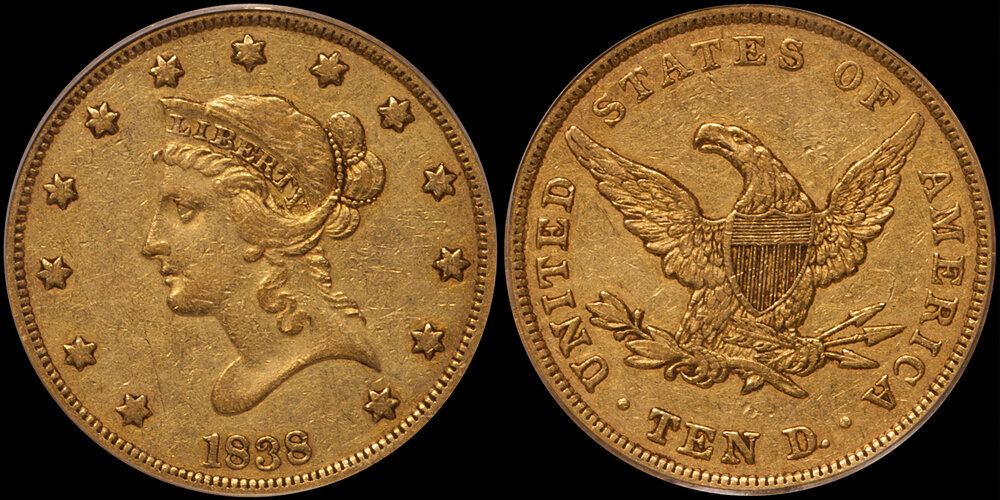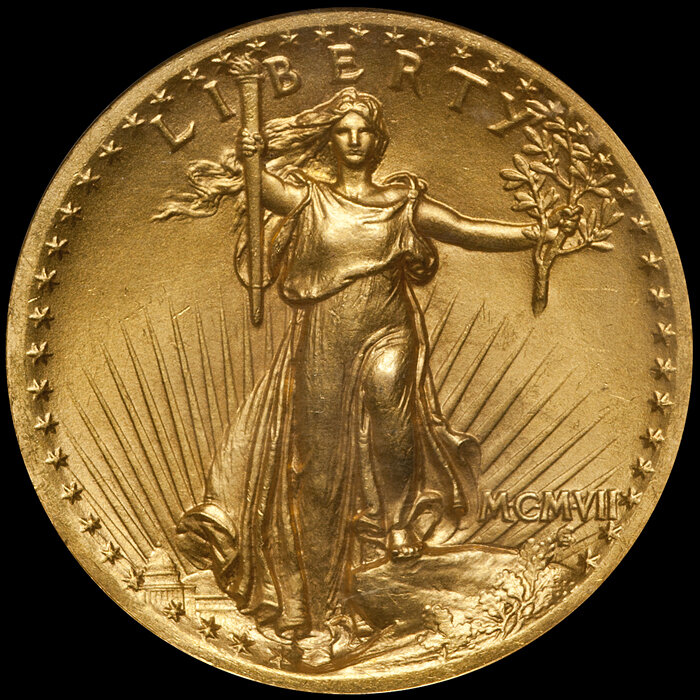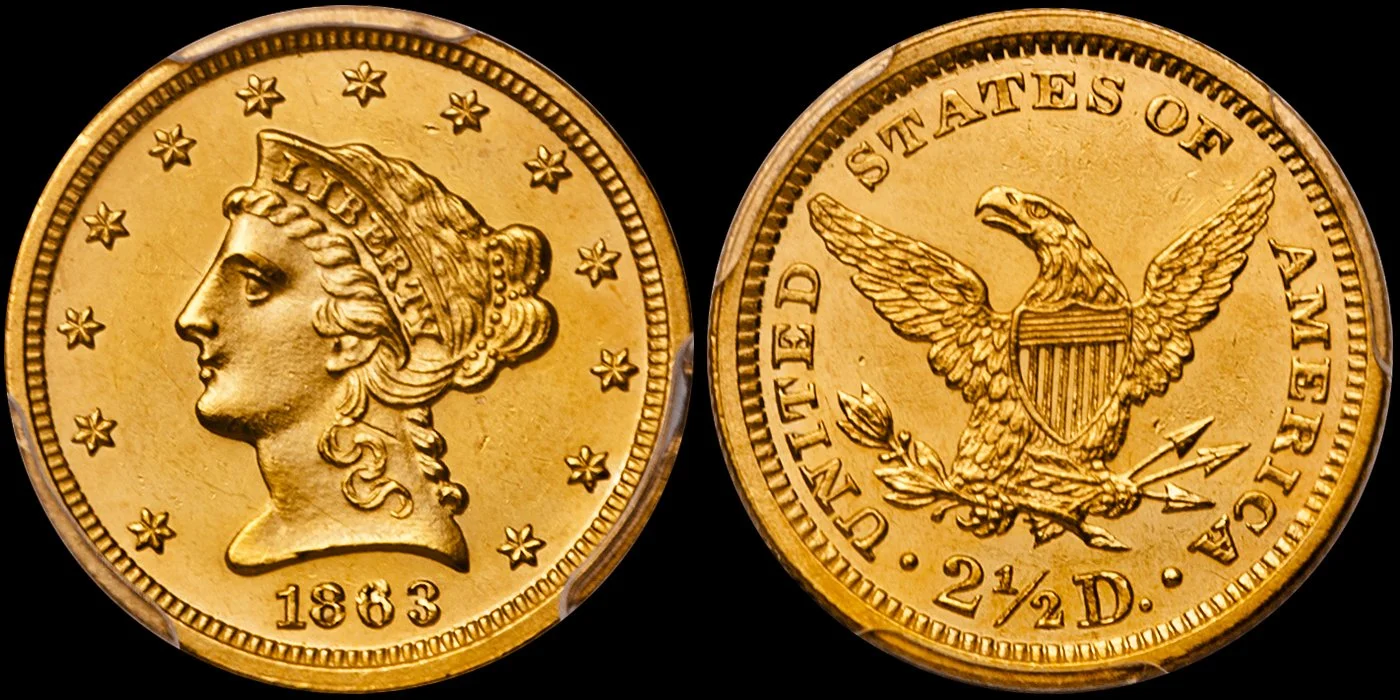What's Hot and What's Not: 2021 Edition
/With a few exceptions, I’ve written a “hot/not” article at the end of the year for the better part of the last decade. Some years this is an exercise in futility when everything seems tepid from a price standpoint. And during strong markets, I think it looks disingenuous to state that everything is hot and that nothing (with the exception of Indian Head quarter eagles and Type Two double eagles, two market segments that appear to be in a semi-permanent death spirals) is in the dumps, price-wise.
2020 should have been a horrible year for the coin market but, in a huge surprise, it was one of the better years in recent memory. With the supply chain in the coin market severely impacted by the worldwide pandemic, dealers had to become extremely clever to locate good coins. It is my impression that a number of market segments saw 5-20+% price increases, but these were very subtle as price reporting mechanisms remained ineffective and many didn’t reflect these obvious strengths.
You’ll note some surprising areas of strength in my list below as well as some weak or flat areas that I’d predict that many casual observers were not aware of.
HOT: FINEST KNOWN AND CONDITION CENSUS LIBERTY HEAD QUARTER EAGLES
There are a number of business strike quarter eagle dates which saw all-time auction price records in late 2019 and 2020. These include the 1850, 1854, 1854-S, 1861 New Reverse, 1862, 1863 (Proof) 1865, 1865-S, 1870-S, 1875, 1878-S, 1889, and 1893.
I’ve paid record prices for at least 20 different date Liberty Head quarter eagles, but there wasn’t a single coin in this record-setting group which I bought (I did set a few record prices via private treaty sales in 2020).
1850 $2.50 PCGS MS63+ CAC
I can think of at least a half dozen very serious collectors of Liberty Head quarter eagles who are currently seeking finest known or high Condition Census pieces. Unlike large-size gold coins of this era, you can swim in the deep end of the quarter eagle pool for $20,000-40,000 in many cases.
Something else is happening in the quarter eagle series which deserves mention: the high prices and strong demand are more for the formerly unpopular San Francisco and Philadelphia issues.
NOT: COMMON DATE SMALL DENOMINATION PROOF GOLD
If you pay careful attention to auction catalogs and to dealer’s websites, you’ll no doubt notice a lot of common date small size Proof gold, including some in very high grades. By “common date” I am referring to gold dollars from 1884 through 1889, and quarter eagles from the mid-1890s through 1907.
For some reason—possibly the release of a large hoard—there seem to have been tons of unusually nice common date Proof gold dollars and quarter eagles on the market in 2020. These were coins in the PR66 to PR68 range; many with lovely Deep Cameo contrast and CAC approval.
I am an avid buyer of rare date Proof gold dollars (those struck prior to 1882) and quarter eagles (those struck prior to 1890), but I tend to avoid the common dates in uncommon grades as I personally feel they are overvalued.
Let’s take a quick look at one common date: the 1900 quarter eagle. In the last three years, there are no fewer than eight APRs for Proof-66 through Proof-68 examples. Prices have declined by 10-15% and the only pieces which have retained most of their value are those which are CAC approved.
HOT: COLLECTOR QUALITY CHARLOTTE AND DAHLONEGA GOLD
The market for collector quality Charlotte and Dahlonega gold has seen a real spike in interest in the last few years. (I often use the expression “collector quality” and in this case, I am referring to nice, problem-free C+D mint coins in the VF/EF/lower AU grade range).
While C+D gold dollars aren’t in strong demand, quarter eagles and half eagles are.
1847-C $2.50 PCGS EF40 CAC
Let’s look at the common date 1847-C quarter eagle in PCGS EF40. If I go back to my records for 2014, I note that I was able to buy three examples in the $1,150-1,350 range. In 2020 I purchased two, and had to pay $1,950 and $2,150.
How about an 1854-D half eagle in PCGS in VF35? Five years ago, I was able to buy these in the $1,100-1,300 range. Today, my cost is more like $1,600-1,800.
I’d estimate that C+D quarter eagles and half eagles appreciated by around 10-15% in 2019/2020 and that this range is probably even greater for choice, high-end CAC coins in EF and AU.
NOT: COMMERCIAL QUALITY EARLY GOLD
1806 Round 6 $5.00 in PCGS AU55 CAC
One of the many positive things that CAC has done for the coin market in its 10+ years is to quantify condition rarity. It has shown, for example, that many early gold coins are either over-graded or they have been tampered with. Even issues such as an 1806 Round 6 half eagle in AU55 which is a comparatively common coin becomes scarce in CAC approved AU55.
The price differential between CAC quality and commercial quality early gold has really increased during the last few years. If available, a CAC approved PCGS AU55 1806 Round 6 would likely run around $11,000-12,000. Interestingly, an unappealing PCGS MS61 example of this issue would sell for just a small premium (if that) over a choice CAC approved AU55.
Commercial quality early gold rarities seem weak right now as well. This is especially true for early eagles which tend to come with a scrubby appearance more often than quarter eagles and half eagles of this era. A coin like a 1795 $10 in low-end AU58 dropped at least 10% in value in 2020. Unless, of course, it was CAC approved; these are in very strong demand and they command a very high premium.
Given the fact that there were significant numbers of low-end Uncirculated early half eagles and eagles for sale in 2020, I think it is likely that these will continue to dip in price and that nice CAC approved examples will command premiums as high as 30-40%.
HOT: RARE DATE LIBERTY HEAD EAGLES
Around six to eight years ago, Liberty Head eagles (especially the No Motto issues from 1838 to 1866) hit a tipping point in which they went from Cult Collectible to Popular Series. This was due to the fact that rare Liberty Head double eagles became too expensive for most collectors, and eagles were the next best series in terms of size.
In 2017 and 2018, this series saw real price appreciation. The Admiral Collection, sold by Heritage in February 2018, was a record-setting auction with dozens of new price records for the series, including a number of records which will probably never be broken.
I don’t think prices in this series saw big increases in 2020 (certainly not at the levels seen in 2017 and 2018) but the demand for good quality No Motto Liberty Head eagles was strong in 2020.
I think the market will continue to be strong for these coins in 2021. I think there are pockets of weakness (the late date New Orleans issues from 1888 through 1906 in grades through MS63 seem to lack strength right now), but there seems to be a real lack of supply in the No Motto issues.
NOT: TROPHY COINS
I define a “Trophy Coin” as something which is big, beautiful, and easy for the deep-pocketed collector or investor with only basic numismatic experience to appreciate. Examples of Trophy Coins include High Relief Double Eagles, Pan-Pac $50 Round and Octagonals, 1907 Wire Edge Indian Head eagles, and 1879 Flowing Hair Stellas.
In 2019, an average quality PCGS MS63 1907 Wire Edge High Relief $20 typically sold for around $20,000. In late 2019/early 2020 a substantial hoard of High Reliefs in MS63 through MS65 came onto the market and prices dropped to $14,000-15,000 by the middle of 2020. Prices rose slightly towards the end of the year but these are likely to remain flat in 2021.
The popular and beautiful 1915-S Pan-Pac Octagonal $50 saw price weakness in MS63 and MS64 grades in 2020. Prices were down around 10-15% from their 2018/2019 levels. This was due to a large number of coins being available. It should be noted that nice quality PCGS/CAC coins in this grade range did a better job of holding their value.
The same can be said for PR63 and PR64 1879 Flowing Hair Stellas. While always in demand, these do not offer the same degree of value as do others gold coins in this price range. For $150,000-200,000 you can buy three or four incredible Finest Known or high Condition Census Liberty Head half eagles and/or eagles, or you can buy an average quality Stella. In 2021, it’s pretty clear that the majority of potential buyers at this price point will choose the former.
My instinct tells me that Trophy Coins will continue to show weakness in 2021 unless the abundant supply dries up. Nice CAC approved examples of these issues are another story and while I don’t necessarily want to buy them for my inventory, I wouldn’t be opposed to buying a nice PCGS/CAC MS64 High Relief double eagle.
HOT: CARSON CITY DOUBLE EAGLES
From the early part of the 2010s through the middle of 2017, Carson City double eagles saw an almost continual increase in price. Prices increased for both common dates and scarce dates. Two random examples: from early 2010 to 2018, a PCGS AU53 1872-CC increased in value from $9,000 to $15,000, while a more common date, the 1884-CC in PCGS AU58 increased from $4,500 in early 2010 to $8,000 by the beginning of 2018.
Large numbers of common date CC double eagles came into the market around the middle of 2018 and common dates—such as the 1884-CC—dropped dramatically in price. By late 2019/early 2020, these had dropped down to the low $4,000s. Savvy gold coin buyers, myself included, became interested in 1884-CC twenties at $4,250 if for no other reason than they just seemed like really good value.
As 2020 came to a close, I noted an increase of around 10% for common date CC double eagles in most grades. I can easily see these coins gaining another 10% in 2021. I believe that this will also be the case for scarcer dates, especially for coins which have CAC stickers.
From an overall perspective, 2020 will go down in history as a year of surprises in the rare coin market. Considering that there were essentially no shows and travel was extremely limited, a lot of business occurred and the savvier wholesale and retail dealers put up excellent numbers.
I think 2021 will be a repeat of 2020. I can’t imagine that we will see any major shows until Summer ANA, and it will remain challenging for dealers such as me to source good coins to offer to our clients.
What was your perspective on the year 2020 as it related to rare coins? I’d love to hear your comments and invite you to start a conversation below.


























